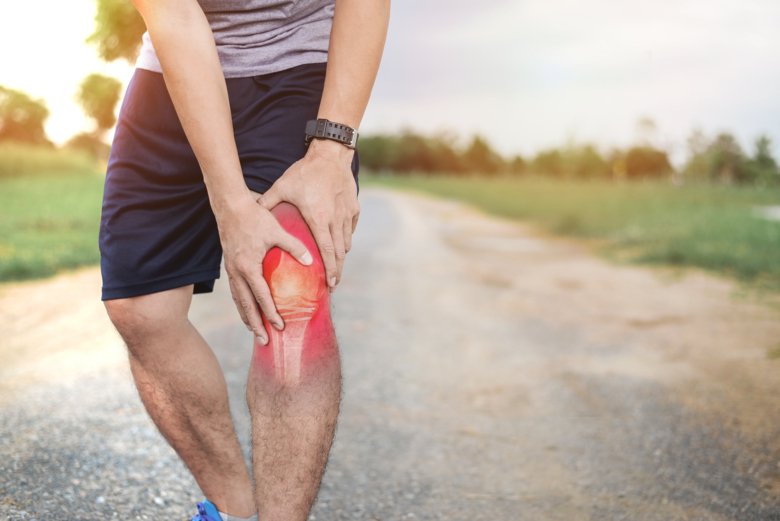2023-01-24 スウェーデン王国・カロリンスカ研究所(KI)

Osteoarthritis of the knee joint is associated with reduced quality of life. Poto: Getty Images,
◆変形性膝関節症は、慢性的な痛み、こわばり、機能障害、QOL(生活の質)の低下を伴います。好ましい治療法は運動ですが、どの運動量が最適かを調べた研究はほとんどありません。
◆本研究の仮説は、高用量は低用量より優れているというものであった。本研究は、多施設共同無作為化優越試験として計画された。ノルウェーに2施設、スウェーデンに2施設、合計4施設の189名の患者を対象とした。
◆2群に無作為に割り付け。高用量群に無作為化された患者は70〜90分の11の段階的エクササイズを行い、低用量群に無作為化された患者は20〜30分の5つの段階的エクササイズを行った。すべての患者が週3回の治療を12週間受けた。
◆主な結果は、KOOS(Knee Injury and Osteoarthritis Outcome Score)を用いて、3カ月間は隔週で、その後、性交渉と12カ月後に再び測定された。すべてのフォローアップ期間において、KOOSスコアは両群で改善したが、著者の仮説を支持しない所見であった。
◆高用量運動が有利であったのは、治療終了時と介入後6カ月目のスポーツ・レクリエーション時の膝機能の領域と、6カ月目のQOLの領域だけであった。
◆各グループの半数が改善。著者らは、活動的な生活を送る人々にとって、長期的には高用量治療の方が低用量治療より望ましい可能性があると指摘している。しかし、低用量群の参加者は介入をほぼ完璧に守っていたのに対し、高用量群の参加者は脱落率が高かったことから、アドヒアランスが問題となる可能性がある。
<関連情報>
- https://news.ki.se/both-high-and-low-dose-exercise-therapy-is-beneficial-for-knee-osteoarthritis
- https://www.acpjournals.org/doi/10.7326/M22-2348
変形性膝関節症に対する高用量と低用量の運動療法、多施設共同無作為化比較試験。 High- Versus Low-Dose Exercise Therapy for Knee Osteoarthritis A Randomized Controlled Multicenter Trial
Tom Arild Torstensen,Håvard Østerås,Riccardo LoMartire,Georg Mørtvedt Rugelbak, Wilhelmus Johannes Andreas Grooten and Björn Olov Äng
Annals of Internal Medicine Published:24 January 2023
DOI:https://doi.org/10.7326/M22-2348
Background:
The benefits of exercise in patients with knee osteoarthritis are well documented, but the optimal exercise dose remains unknown.
Objective:
To compare high-dose versus low-dose exercise therapy with regard to knee function, pain, and quality of life (QoL) in patients with long-term symptomatic knee osteoarthritis.
Design:
A Swedish and Norwegian multicenter randomized controlled superiority trial with multiple follow-ups up to 12 months after the intervention. (ClinicalTrials.gov: NCT02024126)
Setting:
Primary health care facilities.
Patients:
189 patients with diagnosed knee osteoarthritis and a history of pain and decreased knee function were assigned to high-dose therapy (n = 98; 11 exercises; 70 to 90 minutes) or low-dose therapy (n = 91; 5 exercises; 20 to 30 minutes).
Intervention:
Patient-tailored exercise programs according to the principles of medical exercise therapy. Global (aerobic), semiglobal (multisegmental), and local (joint-specific) exercises were performed 3 times a week for 12 weeks under supervision of a physiotherapist.
Measurements:
The Knee Injury and Osteoarthritis Outcome Score (KOOS) was measured biweekly during the 3-month intervention period and at 6 and 12 months after the intervention. The primary end point was the mean difference in KOOS scores between groups at the end of the intervention (3 months). Secondary outcomes included pain intensity and QoL. The proportion of patients with minimal clinically important changes in primary and secondary outcomes was compared between groups.
Results:
Both groups improved over time, but there were no benefits of high-dose therapy in most comparisons. One exception was the KOOS score for function in sports and recreation, where high-dose therapy was superior at the end of treatment and at 6-month follow-up. A small benefit in QoL at 6 and 12 months was also observed.
Limitation:
There was no control group that did not exercise.
Conclusion:
The results do not support the superiority of high-dose exercise over low-dose exercise for most outcomes. However, small benefits with high-dose exercise were found for knee function in sports and recreation and for QoL.
Primary Funding Source:
Swedish Rheumatic Fund.



